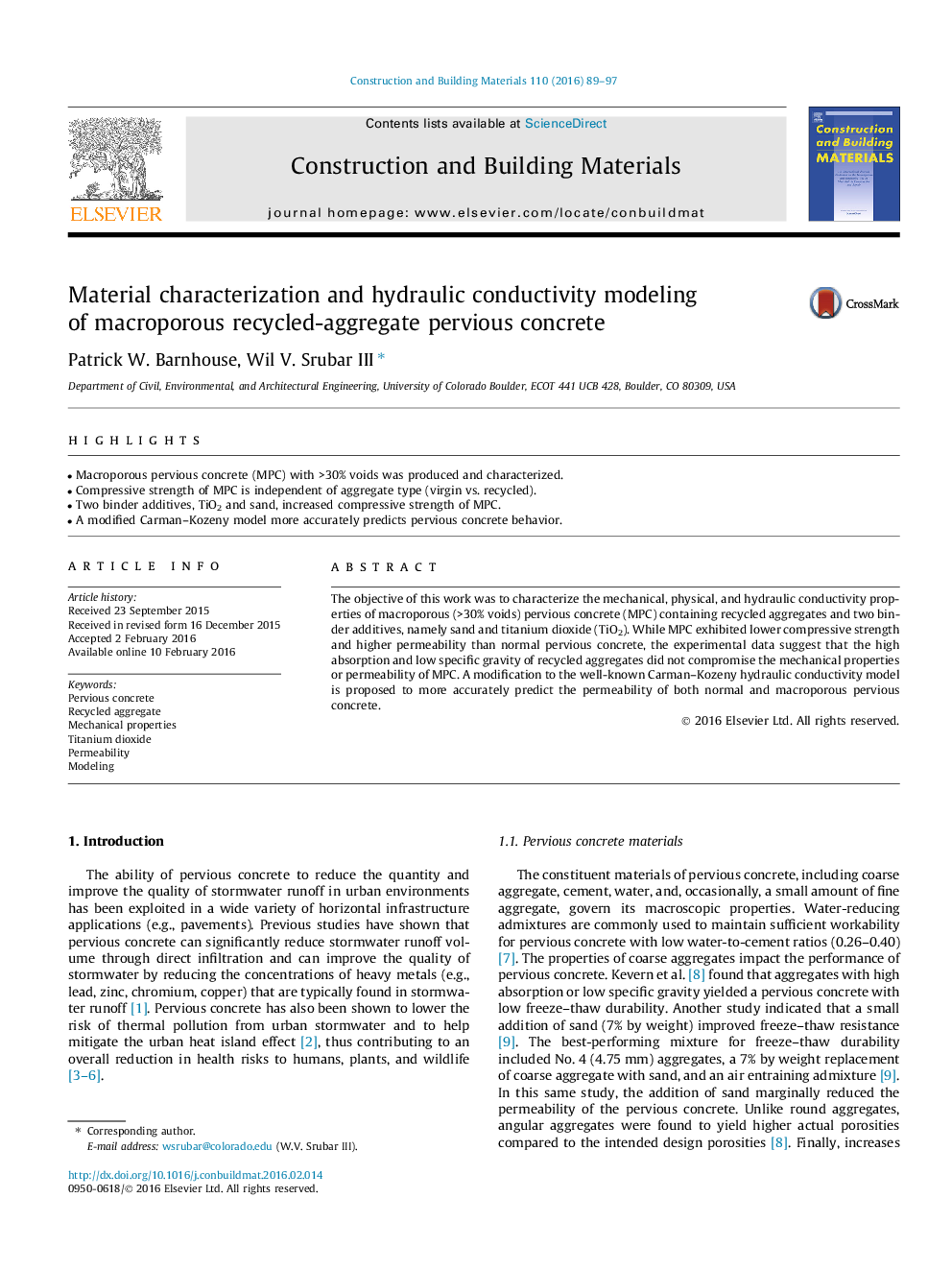| Article ID | Journal | Published Year | Pages | File Type |
|---|---|---|---|---|
| 256063 | Construction and Building Materials | 2016 | 9 Pages |
•Macroporous pervious concrete (MPC) with >30% voids was produced and characterized.•Compressive strength of MPC is independent of aggregate type (virgin vs. recycled).•Two binder additives, TiO2 and sand, increased compressive strength of MPC.•A modified Carman–Kozeny model more accurately predicts pervious concrete behavior.
The objective of this work was to characterize the mechanical, physical, and hydraulic conductivity properties of macroporous (>30% voids) pervious concrete (MPC) containing recycled aggregates and two binder additives, namely sand and titanium dioxide (TiO2). While MPC exhibited lower compressive strength and higher permeability than normal pervious concrete, the experimental data suggest that the high absorption and low specific gravity of recycled aggregates did not compromise the mechanical properties or permeability of MPC. A modification to the well-known Carman–Kozeny hydraulic conductivity model is proposed to more accurately predict the permeability of both normal and macroporous pervious concrete.
